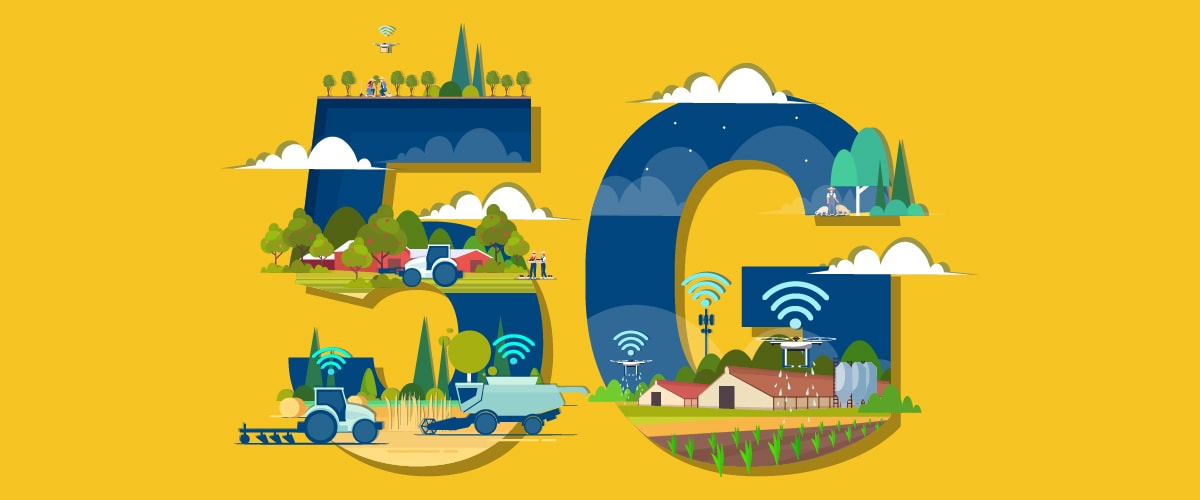 Web Content Viewer
Web Content Viewer
Impacts of 5G in the Food Industry

In a recent article I wrote for Food Manufacturing, I explained that consumers are increasingly demanding transparency into the food they buy, particularly since the onslaught of the COVID-19 pandemic, and the global 5G wireless rollout promises to meet those demands in new ways.
5G is the fifth generation in mobile networks and enables connections between machines, objects and devices that are faster and more powerful than previous networks. 5G has a low latency, drastically reducing response times and offers higher capacities in terms of bandwidth. The technology allows users to communicate more information or data at once, and in a quicker amount of time.
How Will 5G Impact the Food Industry?
Enhanced security
FDA regulations and consumer well-being make safety a huge concern for anyone in the food industry. By utilizing 5G networks, food manufacturers can drastically improve safety protocols throughout the food industry supply chain thanks to a range of data collection, scanning, analyzing and communicating capabilities.
Improved efficiency and communications
5G will enable communications in particular areas - communicating watering levels, status, harvested foods, and transported goods. 5G will reduce lag times, inaccuracies in product location due to slow data reporting, and even product-loss due to mass recalls.
5G-enabled IoT devices and sensors on products can send real-time information about where products are, without workers having to scan barcodes, use RFID readers, or handle the food. Farmers can use 5G-enabled IoT sensors that identify sections, aisles, or rows rather than the entire farm. In the case of a recall, these sensors can help determine exactly which products are bad, eliminating the need to recall an excessive amount of merchandise.
5G will bolster compliance efforts
With 5G infrastructure, implementing processes that are compliant with these efforts gets easier. For example, with millions of Americans affected by foodborne illness each year, 5G can contribute to the public good by helping trace the origins of these illnesses. 5G may even prevent recalls from happening in the first place. When the technology is deployed across fleets of delivery trucks, IoT sensors can record information such as temperature variations that often lead to contaminated food, meaning potentially tainted food never makes it to the shelf for distribution.
5G networks will enable more timely and accurate pinpointing of food conditions - monitoring temperature and condition issues as well as tracing where a product came from in order to ensure FDA regulations have been adhered to throughout a product’s journey.
What Consumers Can Expect
5G’s rollout in over 18 countries this year will mean much more than just faster consumer products. The food industry will gain access to a faster, more flexible, and far more efficient means of connecting their operations and enabling data connections at any point in the supply chain via IoT devices. It will also gain consumer trust by storing blockchain. But to reap the benefits of 5G, food operations professionals at every step of the food supply chain need to understand how this technology can help them meet consumer demands for transparency, improve food safety, and future-proof their business.
5G may potentially disrupt nearly every industry, but few are as vital as the global food supply chain. To meet the demands of consumers, as well as expanded regulations for suppliers by government and private enterprise, food suppliers need to be at the forefront of incorporating this technology into industry processes.
Kevin Beasley
Chief Information Officer
Chief Information Officer
Comments
By using this site you agree to our Privacy Policy and our Terms of Use.
120 Comac Street
Ronkonkoma, NY 11779
Ronkonkoma, NY 11779
 | Vormittag Associates, Inc. ©2025 |
| Vormittag Associates, Inc. ©2025 |